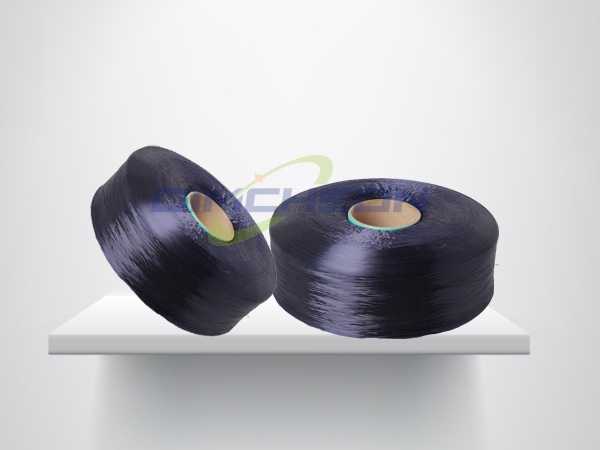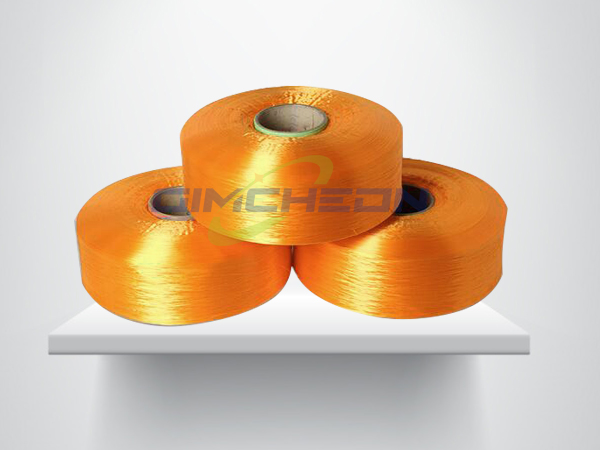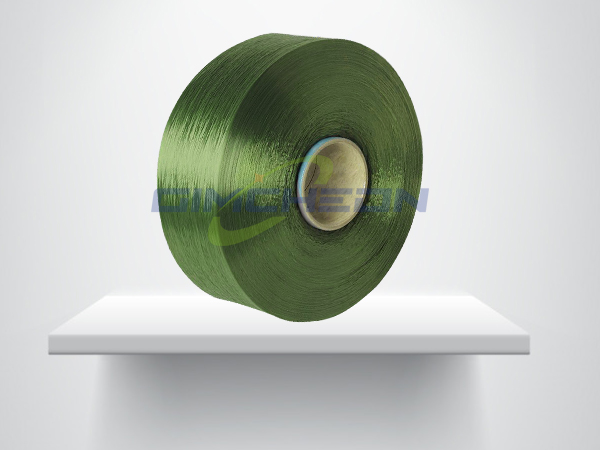

- Tel:0086-0595-83993333
- cel:0086-13506902333
- E-mail:admin@jqfibre.com
- add:Longshi Road, Fashion Apparel Industrial Park, Longhu Town, Jinjiang City, Fujian
2020 is an extraordinary year. Under the strong leadership of the Party Central Committee, my country's epidemic prevention and control and economic and social development have achieved significant results. The domestic economic operation continued to recover steadily, and it was the first to achieve positive growth among the world's major economies, and the total economic volume reached a new level of one hundred billion yuan. From the perspective of the industry, affected by the epidemic in the first 4 months, the production and operation of my country's cotton textile industry is facing severe challenges, and the industry is in a sluggish state. Since May, as the domestic epidemic prevention and control situation continues to improve, the consumer market has steadily recovered, and the industry's prosperity has gradually recovered. Especially after September, the industry's production and sales have improved significantly, and the prosperity index has been continuously higher than the dry line.
In December, the prosperity index of China's cotton textile industry was 53.43. Overall, since April, the cotton textile prosperity index has gradually shown an upward trend. From the perspective of each sub-index, the value of the sub-index in December is higher than the Kurong line. According to the research conducted by the China Cotton Textile Industry Association (hereinafter referred to as the "China Cotton Industry Association"), the price of raw materials increased in December, coupled with the increase in the replenishment of enterprises at the end of the year, the purchase of raw materials increased compared with November; in terms of production, sales and inventory, spinning mill orders were basically sufficient , The workshop is at full capacity, and the product inventory is low or no inventory. Compared with spinning mills, orders from weaving mills are slightly inadequate. Since it takes a certain time for upstream price increases to be transmitted to the end of grey fabrics, weaving mills have less profit margins.
In terms of import and export, my country’s textile and apparel exports in December amounted to US$26.2 billion, a month-on-month increase of 6.2%. Among them, textile exports were US$12.29 billion, an increase of 2.4% month-on-month, and clothing exports were US$13.91 billion, a month-on-month increase of 10.4%. In 2020, my country's textile and apparel exports were US$291.22 billion, a year-on-year increase of 9.6%. Among them, textile exports were US$153.84 billion, a year-on-year increase of 29.2%, and clothing exports were US$137.38 billion, a year-on-year decrease of 6.4%. It can be seen that although the industry faces the severe and complex international situation and the severe impact of the new crown epidemic in 2020, my country's textile and apparel imports and exports are significantly better than expected, which fully reflects the strong resilience and comprehensive competitiveness of my country's textile and apparel foreign trade.
Raw Material Purchase Index
The raw material purchase index in December was 55.06. From the price point of view, the CotlookA index showed an overall upward trend in December; domestically, as the economic recovery continued to consolidate, market confidence was boosted and domestic cotton prices rose steadily; for chemical fiber staple fibers, viscose staple fiber prices were in the first half of the year. After a slight decline, it began to exert force in the middle of the year. The price of polyester staple fiber showed an upward trend in the first half of the year and remained stable in the second half of the year. Judging from the purchasing situation of cotton spinning enterprises, the purchase of raw materials increased sharply in December, and the increase in cotton purchases was higher than that of chemical fiber staple fiber, which is also related to the basic properties of raw materials.
Specific price data, the average value of the CotlookA index in December was 81.02 cents/lb, an increase of 3.3 cents/lb from the previous month, the average price of domestic 3128 cotton was 14,889 yuan/ton, an increase of 157 yuan/ton; the average price of mainstream viscose fiber was 10668 yuan /Ton, an increase of 77 yuan/ton from the previous month; the average price of 1.4D direct-spun polyester staple fiber was 5,728 yuan/ton, an increase of 141 yuan/ton from the previous month.
Raw Material Inventory Index
The December raw material inventory index was 52.40, the highest value since February. The price of raw materials rose during the month, and cotton spinning enterprises had sufficient orders. Under the optimistic expectation of the market trend in the later period, the purchase of raw materials by cotton spinning enterprises increased and the raw material inventory increased. In terms of varieties, the increase in cotton stocks is higher than that of non-cotton fiber stocks. According to the data of enterprises coordinated by the China National Cotton Bank, in December, the percentage of companies that increased cotton stocks from the previous month was 54.28%, and the companies that declined from the previous month accounted for 27.86%; non-cotton fiber stocks increased from the previous month to 48.89%, and those companies that fell from the previous month accounted for 48.89%. The ratio is 27.29%.
production index
The December production index was 52.08. During the month, most of the enterprise equipment opened to maintain the full load status in the early period, and some companies that had a low operating rate due to insufficient orders in the early period increased in the month. According to the coordinated research of the China National Cotton Bank, the spinning mills had sufficient orders that month, and most of the companies' orders were scheduled before the Spring Festival, and even oversold; the weaving mills' orders were basically about 30-40 days. In order to meet the order demands of downstream customers, cotton textile enterprises produce "quick horses". According to the data of enterprises coordinated by China National Cotton Bank, the proportion of enterprises with a month-on-month increase in yarn production in December was 50.24%, and the proportion of enterprises with a month-on-month increase in cloth production was 47.53%.
product sales index
December product sales index 54.79. The rise in the price of upstream raw materials that month led to the rise in the price of downstream gauze. The company increased stocking to ensure normal production after the Spring Festival, and the market sales atmosphere was good. In terms of prices, yarn prices have risen higher than grey cloths. Specifically, the average price of 32 cotton carded yarns was 22,109 yuan/ton, an increase of 4.32% from the previous month, and the average price of pure cotton grey cloth (32*32130*702/147"twill) was 5.09 yuan/ton, an increase of 0.59% from the previous month; , Pure cotton yarn orders are stable and can basically be scheduled until the Spring Festival. Non-cotton yarn orders have increased, and some companies have orders scheduled until February; regular grey fabric orders are about one month, and yarn-dyed fabric orders can basically last for one month. Cloth orders are about 40 days; Affected by the epidemic, foreign trade orders have fallen from the same period last year, with a higher decline.
product inventory index
December product inventory index 54.02. Goods went smoothly in the market that month, and the inventory of cotton textile enterprises dropped. According to the coordinated research of China National Cotton Bank, the yarn inventory of spinning mills is low, and most companies have inventory below 15 days or have no inventory. Weaving mills have grey cloth inventory of 15-40 days, and some weaving factories have no inventory. On the whole, the decline in yarn inventory is higher than that of grey cloth. According to the data of enterprises coordinated by the China National Cotton Bank, the proportion of enterprises with a month-on-month decrease in yarn inventory in December was 62.76%, and that of enterprises with a month-on-month decrease in cloth inventory was 53.55%.
Business Management Index
The business operation index in December was 53.65, the highest value in 2020. The price of gauze in the month has risen compared with the previous period, especially the price of yarn has increased at a higher rate, and the profit of spinning mills has improved. As the upstream price increase has not been effectively transmitted to the downstream, the profit margin of the weaving mill is squeezed, and the company basically maintains a profit-guaranteed production. According to the data of enterprises coordinated by the China National Cotton Bank, in December, the proportion of enterprises whose main business income increased from the previous month was 69.45%, and the proportion of enterprises that declined from the previous month was 18.87%; the proportion of enterprises that increased the total profit from the previous month was 54.15%, and the proportion of enterprises that fell 31.70%.
Business Confidence Index
The business confidence index in December was 53.65, the highest value in 2020. The worsening of the new crown epidemic in the United Kingdom that month slowed the recovery of the global economy, and rising market risk aversion drove funds to flee. Companies said that cotton prices may fall, but there is little room for decline. With the gradual vaccination of vaccines and the orderly recovery of domestic consumer demand, the increase in downstream replenishment is gradually released. In the short term, the market is showing a positive trend, and most companies are optimistic and cautious about the market outlook. Some companies also believe that the domestic and international epidemic situation is tightening and uncertainties are increasing, and they are holding a wait-and-see attitude towards the market outlook. According to the data from the China National Cotton Banking Co., Ltd., companies that are optimistic about the market outlook accounted for 45.92% in December and 7.05% of the companies that believe that the market outlook is weak.
- How about clothes made of polypr
- The clothing industry is undergo
- Application field of polypropyle
- The dust of the US election has
- What are the broad uses of Texco
- Operation analysis of China's in
- From January to August this year
- Characteristics of polypropylene
- Application of polypropylene lig
- Textile industry scale and curre




